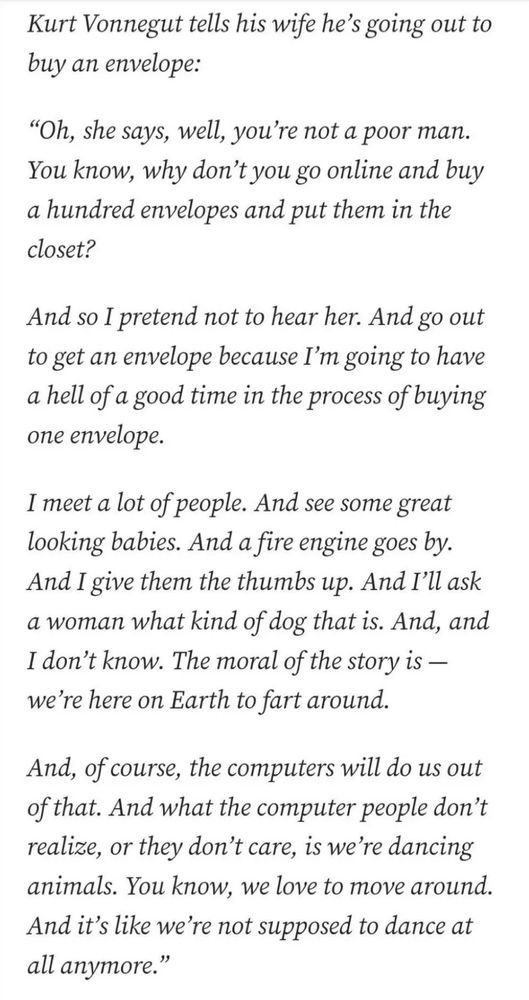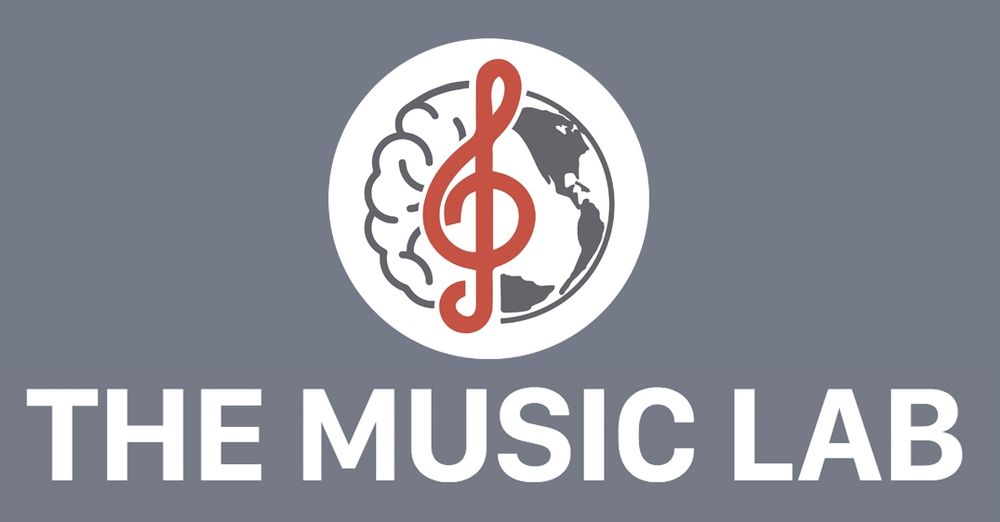Possible graduate programs: Computational Science & Engineering, Neuroscience, Psychology. All applicants welcome, equity seeking groups and Canadian students especially encouraged to apply. Contact me at cannoj9@mcmaster.ca, mention this post!
20.10.2025 20:37 — 👍 1 🔁 0 💬 0 📌 0
Seeking PhD students for research in computational models of rhythm perception at McMaster University (Hamilton, Ontario, Canada). Work may also include experiments on rhythm production in Parkinson’s patients and/or analysis of intracranial dopamine and LFO data, depending on interests and skills.
20.10.2025 20:37 — 👍 1 🔁 1 💬 1 📌 0
Seeking students — especially Canadian residents, who are less expensive, but all applicants welcome — to study the computational and neural underpinnings of rhythm perception and production! Reach out with questions or interest at cannoj9@mcmaster.ca.
21.09.2025 15:25 — 👍 1 🔁 1 💬 0 📌 0
Back home after a fantastic @rppw.bsky.social . A “home conference” is where you don’t have to explain why people should care about what you care about, and having one is such a luxury.
22.06.2025 01:47 — 👍 5 🔁 1 💬 0 📌 0

a monkey robot with the words prove you 're not a robot
ALT: a monkey robot with the words prove you 're not a robot
Big congratulations and thanks to first author Yassaman Ommi, who took her Master’s project very seriously while consistently imagining that she was training a robot monkey to dance, and to her Master's Defence committee (including John Iversen) for helpful comments.
30.04.2025 16:12 — 👍 1 🔁 0 💬 0 📌 0
Thus, we suspect that the development of human synchronization (and human enjoyment of synchronization) is scaffolded by dopaminergic signals that reward earliness over lateness and that reinforce the imitation of observed time intervals, perhaps as a special case of rewarding action imitation.
30.04.2025 16:12 — 👍 1 🔁 0 💬 1 📌 0

...and the activity also showed patterns repeating with a period of two clicks, which strongly suggested the human tendency to hear metronome clicks in groups of two.
30.04.2025 16:12 — 👍 0 🔁 0 💬 1 📌 0

But that's not all! When we looked at the "neural activity" in the network during synchronization, we saw loops of activity with radii dependent on tempo, much like the neural activity observed in monkeys trained to synchronize...
30.04.2025 16:12 — 👍 0 🔁 0 💬 1 📌 0
When the training set consisted of metronomes with jittered timing, this rule produced taps slightly ahead of the clicks, just like humans do, and reduced this lead time with additional training, just like humans with musical training.
30.04.2025 16:12 — 👍 0 🔁 0 💬 1 📌 0
Only the rules that penalized lateness produced synchronized tapping. And only the rule that also rewarded correct intervals produced synchronized tapping that could correct error induced by metronome timing perturbations.
30.04.2025 16:12 — 👍 0 🔁 0 💬 1 📌 0

a penguin wearing a viking helmet with the words you 're late written above it
ALT: a penguin wearing a viking helmet with the words you 're late written above it
We explore several possible reinforcement rules. Each gives maximal reward for taps perfectly synchronized with clicks. But some strongly penalize lateness, and some additionally reward the production of intervals of appropriate duration.
30.04.2025 16:12 — 👍 0 🔁 0 💬 1 📌 0

The model consists of an LSTM recurrent neural network that receives periodic “auditory” "clicks" at a range of periods, produces “tap” actions that occur after a short delay, and is rewarded for its actions according to a reinforcement scheme.
30.04.2025 16:12 — 👍 0 🔁 0 💬 1 📌 0

Kurt Vonnegut tells his wife he's going out to buy an envelope:
"Oh, she says, well, you're not a poor man.
You know, why don't you go online and buy a hundred envelopes and put them in the closet?
And so I pretend not to hear her. And go out to get an envelope because I'm going to have a hell of a good time in the process of buying one envelope.
I meet a lot of people. And see some great looking babies. And a fire engine goes by.
And I give them the thumbs up. And I'll ask a woman what kind of dog that is. And, and I don't know. The moral of the story is — we're here on Earth to fart around
And, of course, the computers will do us out of that. And what the computer people don't realize, or they don't care, is we're dancing animals. You know, we love to move around.
And it's like we're not supposed to dance at all anymore."
Kurt Vonnegut man
10.04.2025 12:27 — 👍 19376 🔁 5454 💬 256 📌 418
@kordinglab.bsky.social
03.04.2025 20:05 — 👍 1 🔁 0 💬 0 📌 0
If you are interested, please send me a CV and cover letter at cannoj9@mcmaster.ca, plus emails for three references. Postdocs will start ASAP, and students will probably have to wait until fall 2026 (but never too early to reach out!)
01.04.2025 15:12 — 👍 0 🔁 0 💬 1 📌 0
...and could also use help perfecting rhythm cognition experiment designs and analyzing neural time series data. I am looking for candidates with experience in any combination of these competencies.
01.04.2025 15:12 — 👍 0 🔁 0 💬 1 📌 0
Over the next two years, I am looking for at least one postdoc and several students to work with us, based at McMaster in Hamilton ON Canada. I will mainly need help developing computational models based in systems-level neurophysiology and/or predictive processing...
01.04.2025 15:12 — 👍 1 🔁 0 💬 1 📌 0
We will be testing several theories based on models of reinforcement learning and action selection in the basal ganglia loop and of rhythm perception as a process of Bayesian active Inference.
01.04.2025 15:12 — 👍 0 🔁 0 💬 1 📌 0
Dan's group will use fast-scan cyclic voltammetry to measure dopamine levels in human basal ganglia at subsecond resolution while neurosurgery patients listen and/or tap along to rhythmic stimuli. (Yes, it's possible!)
01.04.2025 15:12 — 👍 2 🔁 0 💬 1 📌 0
I am honored, delighted, excited, and slightly panicked to have just received a Human Frontier Science Project grant. I will work with Dan Bang at University of Aarhus, Denmark, to explore the role of dopamine in the human capacity and compulsion to predict and move along with auditory rhythms.
01.04.2025 15:12 — 👍 2 🔁 0 💬 1 📌 0
SEEKING POSTDOCS AND STUDENTS for computational/experimental collaboration on neuroscience of human rhythm perception! Thread!
01.04.2025 15:12 — 👍 16 🔁 9 💬 2 📌 1

The Music Lab
We do citizen science to learn how the human mind creates and perceives music.
Not that anybody would be looking for opportunities outside the states these days, but I'm recruiting a PhD student in auditory stuff (Developmental and/or Cognitive / citizen science etc) here in Auckland, NZ
www.themusiclab.org/about#join
24.03.2025 01:14 — 👍 34 🔁 19 💬 1 📌 0
Thanks to early readers -- @perikeller.bsky.social , Peter Vuust, @sylvienozaradan.bsky.social, Alan Wing -- and to my lab for following me down this rabbit hole! Experimental results to follow in not too long!
11.02.2025 16:05 — 👍 1 🔁 0 💬 1 📌 0
So what can we do with this understanding? In addition to explaining experimental results, this idea poses challenges to existing models of rhythm production and entrainment, and may be a key to understanding the role of the cerebellum and the impact of autism on sensorimotor synchronization.
11.02.2025 16:05 — 👍 0 🔁 0 💬 1 📌 0

A simple model captures it all -- see paper for mathy (but not TOO mathy) details!
11.02.2025 16:05 — 👍 0 🔁 0 💬 1 📌 0

a person is making a devil horns sign with their hands .
ALT: a person is making a devil horns sign with their hands .
Here I argue that most effects of movement on beat perception can be accounted for if we simply assume that our "beat sense" can be entrained by the sensory feedback from our own movement. In other words, when we move rhythmically we rock out to the rhythm of our own heads, hands, and feet.
11.02.2025 16:05 — 👍 0 🔁 0 💬 1 📌 0
...in particular, rhythmic movement gives perceptual “momentum” to the perceived beat, helping it continue and making it robust to input perturbations and complexity. An unresolved question is whether these effects are due to the INTENTION to move, or to the EFFECTS of moving.
11.02.2025 16:05 — 👍 0 🔁 0 💬 1 📌 0
CoSMO, Neuromatch, Neuro4Pros co-founder.
Comp neuro at Queen's U 🇨🇦 studying sensorimotor control.
Vice-Director (Queen's) of Connected Minds.
Mentor, dad, brewing, gardener, artist, antifa.
Renaissance man. Believer in humanity!
http://compneurosci.com/
NeuroAI Prof @EPFL 🇨🇭. ML + Neuro 🤖🧠. Brain-Score, CORnet, Vision, Language. Previously: PhD @MIT, ML @Salesforce, Neuro @HarvardMed, & co-founder @Integreat. go.epfl.ch/NeuroAI
NeuroAI, vision, open science. NeuroAI researcher at Amaranth Foundation. Previously engineer @ Google, Meta, Mila. Updates from http://neuroai.science
PhD student in the Cognitive Neuroscience of Human Verbal Communication Lab (PI Dr. Yulia Oganian) at CIN https://hvclab.github.io/ , member of the IMPRS-MMFD at University of Tuebingen.
she/her
Assoc. Prof. in Cognitive Science at Aarhus University #aarhusuniversity #cogneuroscience #musicscience #mcgillalum
The 20th Rhythm Perception and Production Workshop (RPPW20).
16-19th June, 2025
Jyväskylä, Finland.
Psychology researcher in training | MacEwan University 2019 | University of Oxford 2020 | Western University 2026 (she/her)
Postdoc at UC Berkeley, Redwood Center | 🧠🤖 | 🎹 | 🎾 | https://mysterioustune.com/
postdoc @SapienzaRoma • timing & rhythm processing/cognitive neuroscience • music lover
Sociology, Philosophy, Processist, Neocybernetic, Active Inference.
Bass & Guitar.
Verden, Göttingen, Braunschweig.
{he/him} Born 353 ppm.
https://linktr.ee/Sotensional
Researcher at the intersection of meditation, consciousness, perception and active inference at the Monash Centre for Consciousness and Contemplative Studies (Monash University).
Web: shawnprest.owlstown.net
Aspiring cognitive computational neuroscientist.
Postdoc @ Columbia DSI (w Michael Shadlen & Rich Zemel), Rothschild Fellow & Zuckerman STEM program.
Past: PhD @ ELSC, Huji, Azrieli Graduate Fellow.
Twitter\X: @neuro_gal
Website: gal.vishne.com
Computational cognitive neuroscientist @cnrs.fr 🧠💻
Inner speech, mental/motor imagery, cognitive/statistical modelling, EMG, M/EEG, open and slow science. https://lnalborczyk.github.io
INSERM group leader @ Neuromodulation Institute and NeuroSpin (Paris) in computational neuroscience.
How and why are computations enabling cognition distributed across the brain?
Expect neuroscience and ML content.
jbarbosa.org
Cognitive neuroscientist, CNRS Toulouse. Brain oscillations, auditory system, temporal predictions, brain stimulation.
Lab: https://benediktzoefel.wixsite.com/home
Professor of Psychology @ UNLV. Associate Editor for @jephpp.bsky.social. Researching #Music/ #Auditory Cognition since the last century. Helped found UNLV's Neuroscience Ph.D. program and served as director until July 2022.
We're a cognitive science lab at the University of Auckland and the Yale Child Study Center.
Participate in our research at themusiclab.org!
Center for Music in the Brain (MIB) is a DNRF Center of Excellence at Aarhus University. We investigate how the brain processes music 🎶
www.musicinthebrain.au.dk
MD, PhD, Neuroscientist
Assistant Professor, Center for Music in the Brain
Department of Clinical Medicine, Aarhus University
Denmark
https://scholar.google.com/citations?user=_vU61x4AAAAJ&hl=en
https://www.au.dk/en/show/person/pandonaude@clin.au.dk








